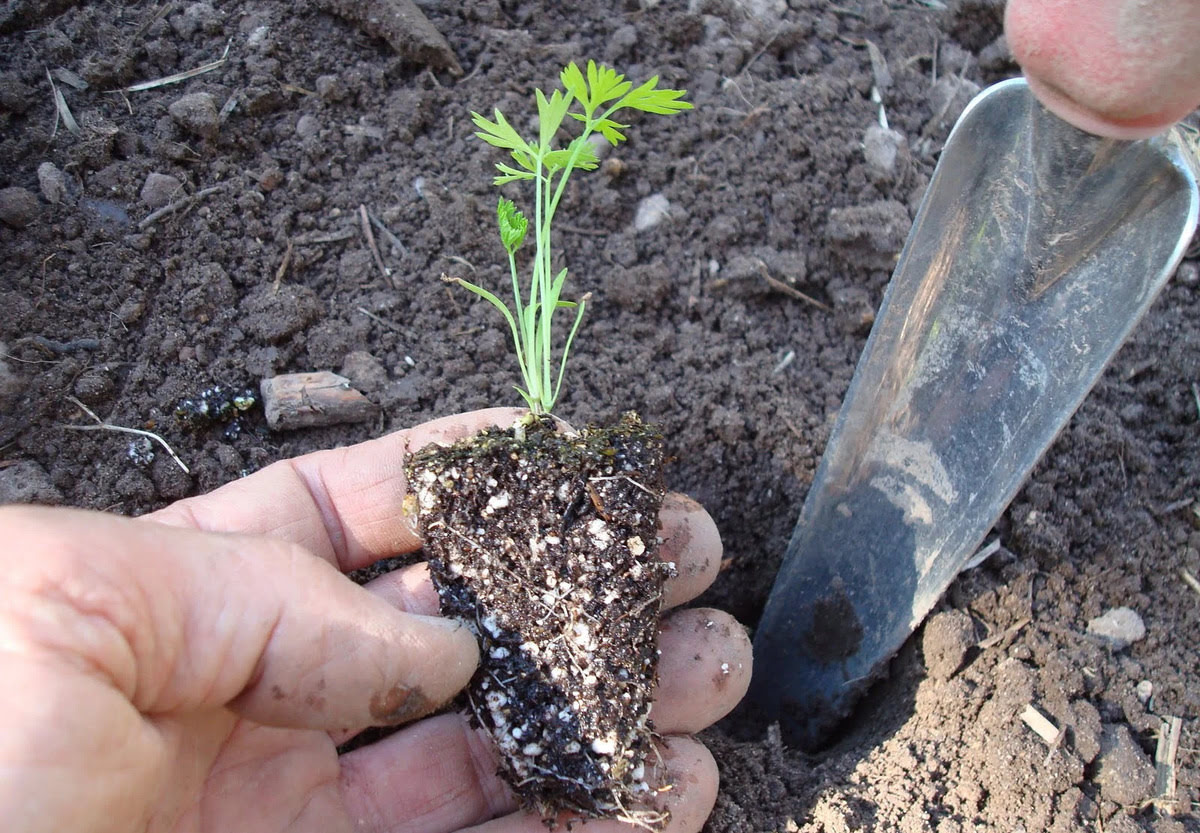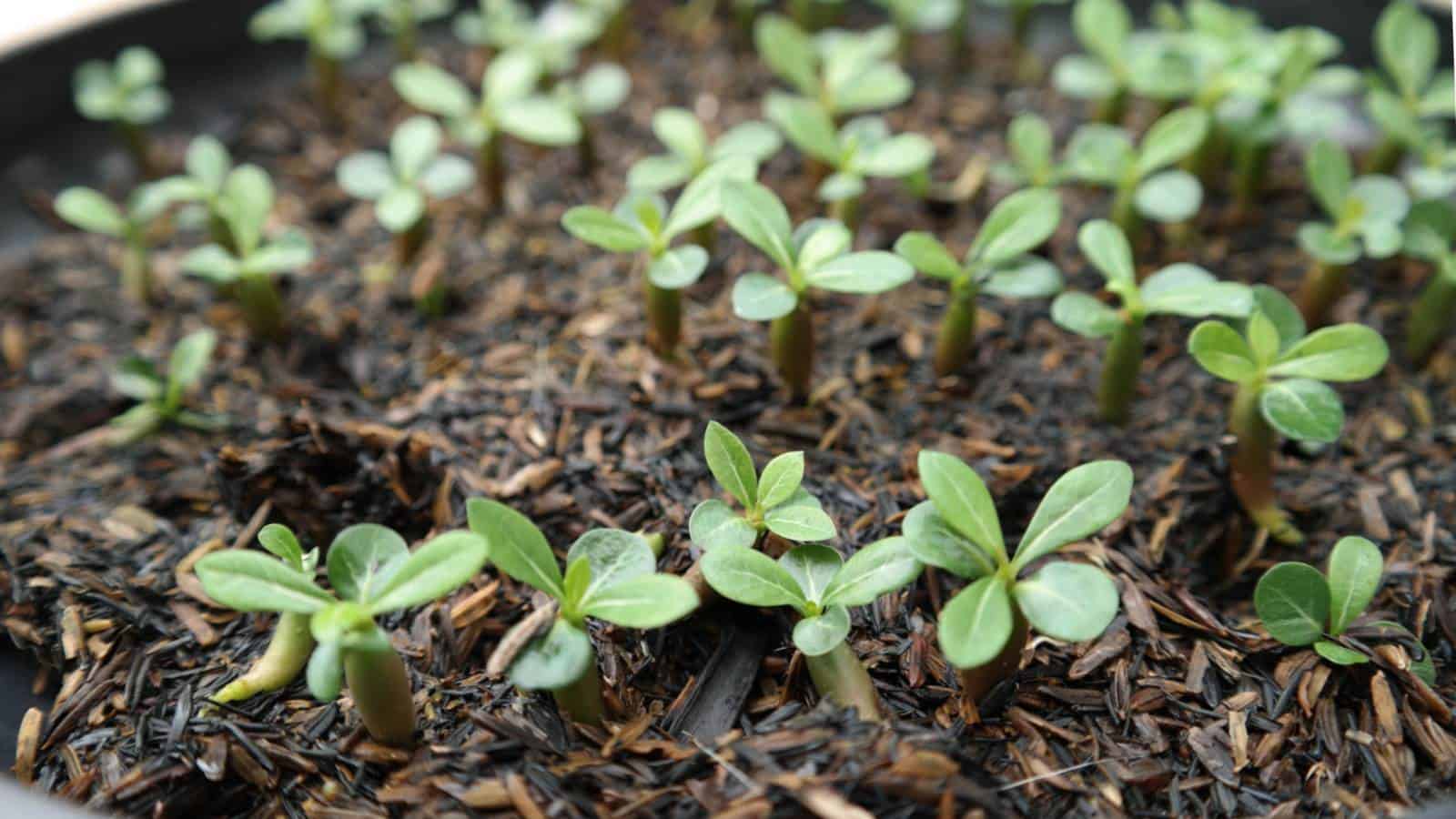Home>Gardening Tips and Tricks>Eco-Friendly Gardening>Hydroponics: When To Transplant Seedlings


Eco-Friendly Gardening
Hydroponics: When To Transplant Seedlings
Published: January 6, 2024
Learn eco-friendly gardening tips for transplanting seedlings in hydroponics. Discover when and how to move your plants for optimal growth. Start your sustainable garden today!
(Many of the links in this article redirect to a specific reviewed product. Your purchase of these products through affiliate links helps to generate commission for Chicagolandgardening.com, at no extra cost. Learn more)
Table of Contents
Introduction
Hydroponics: When to Transplant Seedlings
Welcome to the wonderful world of hydroponic gardening! Whether you’re a seasoned enthusiast or a novice green thumb, the process of nurturing seedlings through their growth stages is an essential aspect of cultivating a thriving garden. As you embark on this journey, understanding the optimal timing for transplanting seedlings is crucial for their successful development. In this comprehensive guide, we will delve into the key indicators that signify a seedling’s readiness for transplantation, along with best practices to ensure a seamless transition.
Hydroponic gardening offers a sustainable and eco-friendly approach to cultivating plants, allowing for efficient use of space and resources while minimizing environmental impact. By harnessing the power of water-based nutrient solutions, this innovative method eliminates the need for traditional soil, presenting a wealth of benefits for both seasoned horticulturists and aspiring gardeners.
As we explore the nuances of transplanting seedlings in a hydroponic environment, you will gain valuable insights into the delicate art of nurturing young plants and fostering their growth in a controlled, nutrient-rich setting. So, whether you’re cultivating vibrant herbs, luscious greens, or bountiful fruits, mastering the art of transplanting seedlings is a pivotal step towards reaping a bountiful harvest.
Understanding the Growth Stage
Before delving into the intricacies of transplanting seedlings, it’s essential to grasp the various growth stages that characterize a plant’s development. In the realm of hydroponic gardening, the journey begins with the germination of seeds, marking the inception of a plant’s life cycle. During this initial phase, the seed absorbs moisture and swells, triggering the emergence of a tiny root, known as the radicle, followed by the emergence of the seedling’s cotyledons.
As the seedling matures, it progresses through the seedling stage, during which the roots and leaves undergo rapid growth. This phase is critical for establishing a robust foundation that will support the plant’s future development. The subsequent vegetative stage is characterized by exponential leaf growth and the strengthening of root structures, laying the groundwork for the plant’s overall health and vitality.
Understanding these growth stages is pivotal for gauging a seedling’s readiness for transplantation. By closely monitoring the plant’s development, you can discern the optimal timing for transitioning it to a larger hydroponic system, ensuring that it continues to thrive in its new environment.
Moreover, recognizing the unique requirements of each growth stage empowers you to tailor the nutrient composition and environmental conditions to suit the plant’s evolving needs. Whether it’s adjusting the pH levels of the nutrient solution or fine-tuning the light and temperature settings, a nuanced understanding of the growth stages enables you to provide tailored care that fosters optimal growth and vitality.
Signs that Seedlings are Ready for Transplanting
As a conscientious gardener, being attuned to the subtle cues that indicate a seedling’s readiness for transplantation is paramount. Several key indicators can guide you in determining the optimal time to transition your seedlings to a larger hydroponic system.
First and foremost, the development of a robust root system is a definitive sign that a seedling is prepared for transplantation. When the roots exhibit healthy growth and begin to fill the current growing medium, it signifies that the plant is actively seeking additional space and nutrients to support its expansion. At this stage, transplanting the seedling into a larger hydroponic setup will provide it with the room and resources necessary for continued flourishing.
Furthermore, observing the overall vigor and vitality of the seedling’s foliage and stems can offer valuable insights into its readiness for transplantation. Lush, vibrant leaves and sturdy stems indicate that the plant is thriving and well-equipped to acclimate to a new environment. Conversely, if the seedling appears stunted or exhibits signs of nutrient deficiency, it may benefit from additional time in its current setting before being transplanted.
Another crucial factor to consider is the age of the seedling. While there is no one-size-fits-all timeline for transplantation, seedlings generally reach a stage where their rapid growth necessitates a transition to a more spacious hydroponic system. By monitoring the plant’s age in conjunction with its overall development, you can discern the opportune moment to facilitate its seamless relocation.
Additionally, paying attention to the frequency of watering and nutrient uptake can provide valuable clues about the seedling’s readiness for transplantation. If the seedling consistently exhausts the available water and nutrients at an accelerated pace, it indicates that its current environment no longer meets its requirements, signaling the need for a larger hydroponic reservoir.
By attuning yourself to these signs and engaging in attentive observation, you can ensure that the seedlings make a smooth transition to their new hydroponic home, setting the stage for robust growth and abundant yields.
Best Practices for Transplanting Seedlings
Transplanting seedlings in a hydroponic system demands precision and care to ensure the seamless acclimatization of young plants to their new environment. By adhering to best practices, you can facilitate a smooth transition that nurtures the continued growth and vitality of your seedlings.
-
Preparation is Key: Before initiating the transplanting process, ensure that the new hydroponic system is meticulously cleaned and sterilized. This precautionary measure mitigates the risk of introducing pathogens or contaminants that could compromise the health of the seedlings.
-
Timing is Crucial: Selecting the opportune moment for transplanting is paramount. Avoid transplanting seedlings during their flowering or fruiting stage, as this can induce stress and impede their development. Instead, aim to transplant the seedlings during their vegetative phase, when they are primed for robust growth.
-
Gentle Handling: When removing the seedlings from their current growing medium, exercise caution to avoid damaging the delicate roots and stems. Handle the seedlings with care, ensuring that their root systems remain intact and undisturbed during the transplantation process.
-
Maintain Adequate Moisture: Prior to transplanting, hydrate the seedlings thoroughly to minimize stress and facilitate the transition. Additionally, maintaining optimal moisture levels in the new hydroponic system post-transplantation is essential for supporting the seedlings' adaptation.
-
Balanced Nutrient Solution: Introduce the transplanted seedlings to a well-balanced nutrient solution tailored to their growth stage. Providing the essential nutrients in appropriate concentrations fosters healthy development and fortifies the seedlings against transplant shock.
-
Optimize Environmental Conditions: Ensure that the environmental parameters, including light intensity, temperature, and humidity, are conducive to the seedlings' well-being. Gradually acclimate the seedlings to their new surroundings to minimize stress and encourage seamless integration.
-
Vigilant Monitoring: After transplanting, closely monitor the seedlings for any signs of distress or nutrient deficiencies. Adjust the nutrient solution composition and environmental conditions as needed to support their adaptation and sustained growth.
By embracing these best practices, you can navigate the process of transplanting seedlings in a hydroponic system with confidence and expertise, laying the groundwork for a flourishing garden teeming with vibrant, healthy plants.
Conclusion
Embarking on the journey of hydroponic gardening unveils a realm of boundless possibilities, where the art of nurturing seedlings and orchestrating their seamless transition embodies the essence of horticultural finesse. As you immerse yourself in the intricacies of transplanting seedlings, the symbiotic interplay between attentive observation and informed action emerges as a cornerstone of your gardening odyssey.
By comprehending the growth stages, recognizing the signs of readiness, and embracing best practices, you empower yourself to orchestrate a ballet of growth and transformation, steering your seedlings towards a future brimming with vitality and abundance. The delicate art of transplanting seedlings transcends mere horticulture; it embodies a narrative of stewardship, where each tender root and unfurling leaf becomes a testament to your dedication to fostering thriving ecosystems within your hydroponic haven.
As you witness the seedlings seamlessly acclimate to their new hydroponic abode, their verdant resilience serves as a testament to your nurturing stewardship. The symphony of growth unfolds, painting a tapestry of lush foliage and burgeoning fruits, a testament to the harmonious synergy between your care and the innate vitality of nature.
In the tapestry of hydroponic gardening, the art of transplanting seedlings emerges as a poignant chapter, where the promise of bountiful harvests and flourishing greenery unfurls with each meticulously orchestrated transition. Embrace the journey with unwavering ardor, for within the delicate tendrils and unfurling leaves lies a narrative of growth, resilience, and the enduring kinship between the gardener and the garden.










